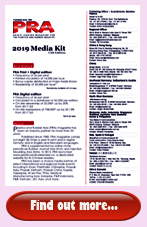PRA Chinese
Rubber Journal Asia Injection Moulding Asia Energy, Oil & Gas Asia
VISIT OUR OTHER SITES:
PRA Chinese
Rubber Journal Asia
Injection Moulding Asia
Energy, Oil & Gas Asia
Chemicals Sector: Plastics producers in danger of becoming household names for all the wrong reasons
By John Richardson, Senior Consultant Asia, ICIS
The plastics or polymers industry was for many years a hidden industry. For most of its history, nobody has known much about the plastics business because it is sandwiched between oil and gas and a huge variety of finished goods. The meat cannot be seen because of the high visibility of the bread around the sandwich.

But now, for all the wrong reasons, companies which produce the polymers that go into everything from plastic bottles and films to Tupperware containers, disposable coffee cups and plastic bags are being recognised by the legislators and the general public. This is the result of the huge pushback against the scourge of plastic rubbish in our rivers and oceans.
For the longest time, from the birth of the modern plastics industry in the 1950s, nobody has given much thought to the environmental impact of what the polymer companies do.
Just to explain what is meant by polymer producers it is the companies, such as ExxonMobil, Chevron Phillips Chemicals, LyondellBasell Industries and Dow Chemical, which make a wide array of different types of polymer pellets from raw materials derived from oil and gas.
Their job traditionally more or less ended once they had shipped polymer pellets to the plastic converters or fabricators. These are the group of companies that melt the polymer pellets down in order to reform them into plastic pipes, bottles, films and bags etc. – the very heart of our modern way of life.
“You do what has to be done to make money and the way to make money as a polymers company was to look upstream, towards your cost of oil and gas raw materials,” said a strategic planner with a major oil, gas and polymers company.
“All that mattered was how cheap you could get your raw materials from as nobody questioned how polymers were made from a sustainability perspective. Demand also wasn’t the problem as plastics found their way into more and more aspects of our modern-day lives. Consumption growth was tremendous.”
Types of recycling

Polymer producers are now under tremendous public and legislative pressure to find technically and economically more efficient ways of recycling plastics – in other words, making their products not from oil and gas but from used plastics.
Recycling falls into two categories – mechanical and chemical. Mechanical involves collecting and sorting waste plastic, an expensive and logistically challenging task, and melting it down to turn it back into finished plastic products.
Chemical recycling involves breaking down plastics back into their chemicals components. What you are left with are transportation fuels and something called naphtha.
Naphtha is traditionally made from oil refineries and is a raw material for producing polymers such as polyethylene (PE) and polypropylene (PP).
There is a lot of scepticism within the industry about the economic and technical viability of chemicals recycling. The problem is achieving the levels of purity necessary to produce naphtha of the right quality to replace naphtha made from an oil refinery.
Spotlight on chemical recycling
Some industry players are predicting major breakthroughs in chemicals recycling over the next five years that radically change the polymers business.
Instead of building new, multi-billion dollar conventional polymer production complexes – and there has been a huge wave of construction of these complexes over the last five years, especially in the US – the production model could shift to one of numerous small chemicals recycling plants.
The plants would take waste plastic from landfill sites at a negative raw material cost. The operators of the landfill sites would be happy to pay polymer companies to take plastic rubbish off their hands in order to save on fees for landfilling.
Would all of these hundreds of small chemicals recycling plants, however, collectively make enough naphtha raw materials to make the plastics to meet global demand?

This is where the demand side of the equation comes under the picture. Through global initiatives such as the Ellen MacArthur Foundation, the brand owners – i.e. the sellers of bottles of shampoo and detergents and a wide range of other consumer disposables, such as Procter and Gamble and Unilever – have made commitments to switch to recycled plastics and to reduce their plastic consumption.
The retailers, including the major supermarkets, are even introducing bans on plastic packaging all together, replacing it with more recyclable packaging made from paper and aluminium.
There have been numerous government initiatives, across both the developed and developing world, to ban certain applications of plastics entirely – such as the ubiquitous and much maligned supermarket shopping bag, which is made from PE.
This is forcing the polymer producers to look much more downstream for their economic success instead of mainly upstream. They will need to work with the brand owners and the retailers to redesign plastic packaging to make it more recyclable and reduce its plastic content in the first place.
Read more.. here
(PRA)
Subscribe to Get the Latest Updates from PRA Please click here
©2019 Plastics and Rubber Asia. All rights reserved.

©2019 Plastics and Rubber Asia. All rights reserved.
Home Terms & Conditions Privacy Policy Webmail Site Map About Us
























